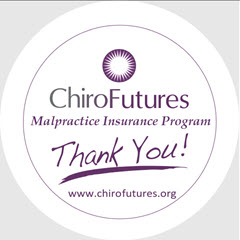Adulting & Chiropractic

The practice of behaving in a way characteristic of a responsible adult, especially the accomplishment of mundane but necessary tasks. This is the definition of “adulting.” Adulting means acting responsibly, behaving maturely, and meeting responsibilities. What does this look like in Chiropractic?
Chiropractic, as health care goes, is a “young” profession, and we have certainly shown signs of maturing and meeting responsibilities. Our responsibility to teach the art, science and philosophy of Chiropractic has caused our educational programs to go from 18 months to 3.5 years. Not only that, but Chiropractic has also developed an agency whose job is to accredit what is taught, making it “okay” or “official,” or “accepted.” This agency is the Council on Chiropractic Education (CCE).
Further, the profession created the National Board of Chiropractic Examiners (NBCE) to document that students had the knowledge, skills, and attitude to be a Doctor of Chiropractic. This is key in the process of obtaining a license to practice.
Once the license is in hand and the practice now opened, the Chiropractic state board of examiners is responsible for protecting the safety of the public and so must “watch over” licensees. They do this by setting the scope of practice and monitoring our CE hours every two years. It was determined many years ago that the states could function more efficiently by learning from each other, so the Federation of Chiropractic Licensing Boards (FCLB) was created as a consortium of state boards to serve as facilitator.
Knowledge of these groups, despite being written about in Chiropractic media, is not common in the profession. Therefore, I am taking a few minutes to discuss it with you.
We are responsible adults, and this is a mundane task. When we step back and look at these three groups, one in accreditation, one in testing, and one in licensing, something seems misaligned. Chiropractic history tells the story of the medical profession trying to eliminate other healing arts, including Chiropractic. Chiropractic simply asked why there is only one approach to health care. A competitive marketplace was an innovative idea.
Why is only ONE testing agency permitted to examine our students? Why is there only ONE consortium of states meeting to discuss how licensees are monitored? What happened to the competitive marketplace?
Do we have only one Chiropractic college? Are we permitted to have a license to practice in only one state? Is there only one place we can go to for CE credits? Do the people in our communities have only one Chiropractic office to choose from? To be clear, this is NOT about eliminating any group or agency.
Simply put, the PSCA does not agree with the “only one” mindset and thus supports a Resolution to Allow for a Competitive Marketplace in Chiropractic Education, Licensing, and Practice. It’s the responsible
thing to do.
Click here to read the resolution.
Resolution to Allow for a Competitive Marketplace in Chiropractic Education, Licensing and Practice.
CLICK HERE for more information

Blogs
- The Chiropractic Cartel: A Look Back at Bias in Accreditation and its Imact on Today's Profession
- Inside Montana's Chiropractic Monopoly: ACA & MCA's Brazen Board Takeover
- Concerns Grow About Control of the NY State Chiropractic Board by the ACA - Use of X-ray in NY Under Threat
- Reproductive Health Information and Chiropractic Care: Navigating New Privacy Regulations
- Navigating Substance Use Disorder (SUD) Consent: What Chiropractors Need to Know













